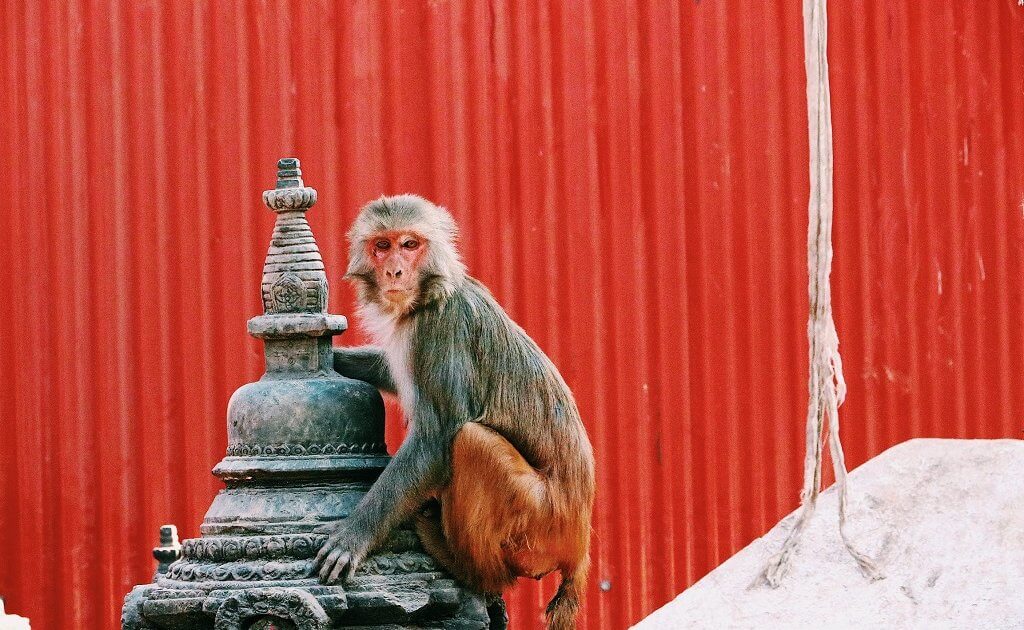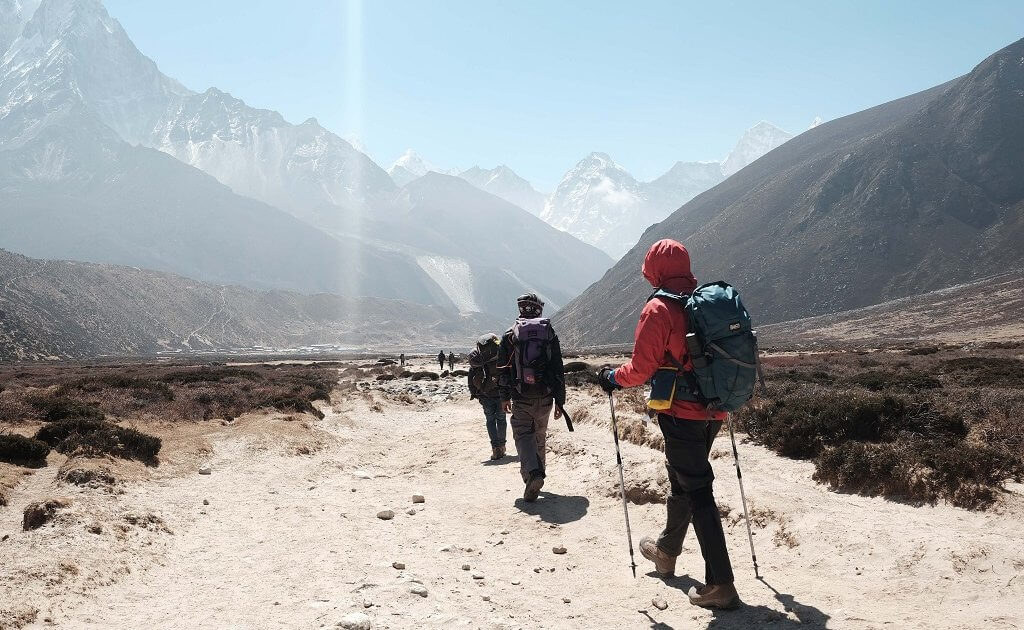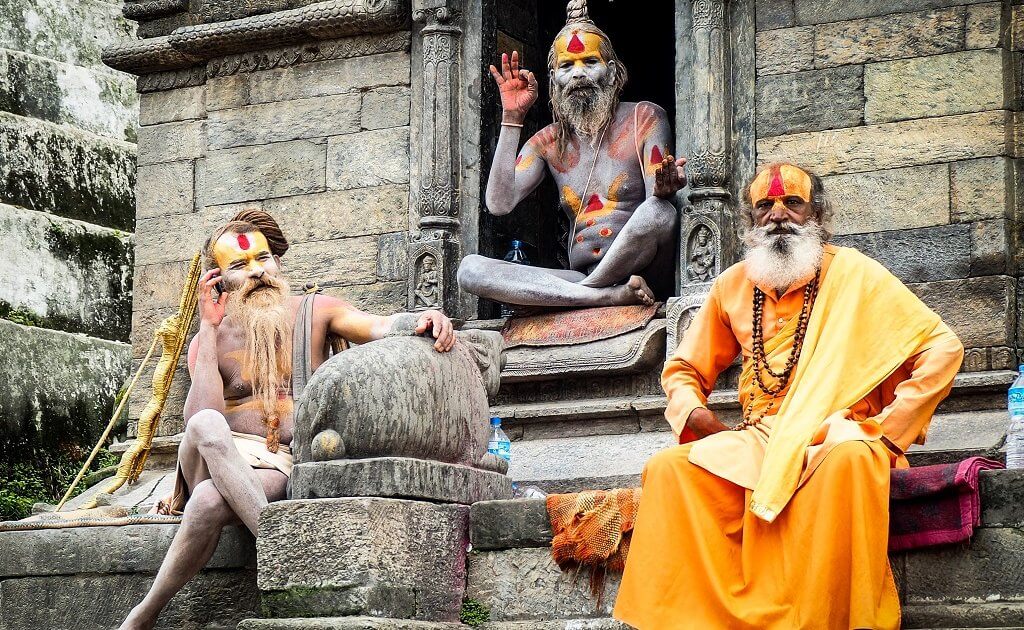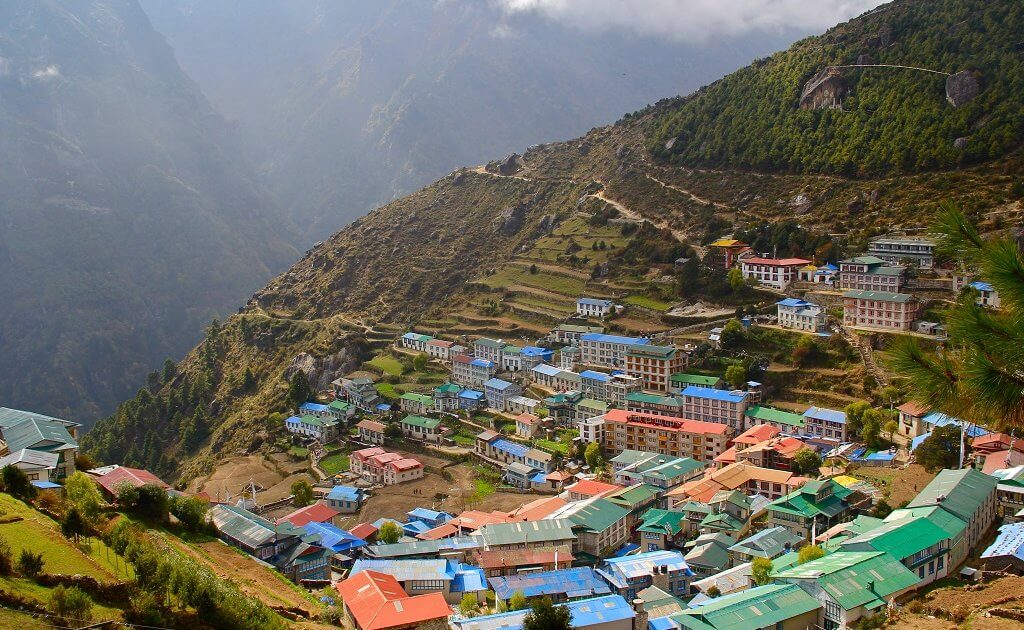Free-Time Activities In Nepal on a Global Volunteers Service Program
Volunteering abroad doesn’t have to be all work! With Global Volunteers programs, ample time on evenings and weekends are available to enjoy the cultural, educational and natural attractions in our partner communities. The free-time activities in Nepal are varied and numerous. These opportunities to explore sites near Kathmandu and in the northern regions are recommended by community leaders.
Boudhanath Stupa:
Boudhanath Stupa, the largest religious temple in Nepal, is the holiest Tibetan Buddhist temple outside of Tibet and one of the largest in South Asia. It is located 1.6 km’s to the east of Kathmandu and dates back to 5th century A.D. According to folklore, the king built the Stupa as an act of repentance after accidentally killing his father. Constructed along the ancient trade route linking Kathmandu with Tibet, it was later used by traders who stopped off to pray for a safe journey home. The stupa’s hexagonal base is 120 meters in diameter (roughly the size of a soccer field), and 36 meters high. Each part of the stupa represents one of the 5 keys elements of nature: The base is earth, the dome is water, the turret is fire, the steeple is air, and the canopy is the ether beyond. In 1979 it became a UNESCO worldwide heritage site, and is one of the leading free-time activities in Nepal.

Boudhanath, Stupa. Largest religious temple in Nepal. Explore during your free time when serving with Global Volunteers.
Rama Janaki Temple:
The Rama Janaki Temple, in Janakpur in the Dhanusa district of Nepal, is 123km south-east of Kathmandu. It’s one of the oldest Hindu temples in the country. According to mythology, it is the birthplace of the goddess Sita. Built in 1910AD by Queen Brisabhanu Kunwari of Tikamgarh who donated 900,000 rupees towards the construction of the three-story temple built entirely from stone and marble. Today the temple is notably popular among female pilgrims, who travel from afar wearing their finest brightly colored saris.
Swayambhunath Stupa (Monkey Temple)
The Swayambhunath Stupa (Monkey Temple) is over 2,000 years old, making it the oldest stupa of its kind in Nepal. Situated high upon a hill, 3km north-west of Kathmandu, it’s famous for its golden spire and panoramic views of the city. According to engravings dating back to 460 AD, it was built by King Manadeva. But, folklore refers to its origins as a lotus flower that blossomed in the valley’s river bed. The story goes that the lotus gave off such an illuminating light, people would travel to worship it. One of these pilgrims cut into the mountain with a huge sword to drain the river – creating the valley of Kathmandu. The flower became a hill and the illuminating light the Swayambhunath Stupa. (Swayambhunath means “self-existent”) To access the temple you need to ascend 365 stone steps, which brings you to the entrance guarded by two stone lions. Not up to hiking? It’s also accessible by road relatively close to the top.

Swayambhunath Stupa monkeys are popular attractions during free-time activities in Nepal.
Narayanhiti Palace:
The Narayanhiti Palace is situated in the center of the Nepalese capital, Kathmandu. Up until 2008, it was the residence of the Monarchy of the kingdom of Nepal. In June 2001 King Birenda, Queen Aishwarya and their family were murdered by their oldest son Crown Prince Dipendra, (who later committed suicide) after the massacre, King Brenda’s brother, Gyanendra became king, however, he was unpopular with the Nepalese people, who in 2008 voted to abolish Monarchy. He was given 15 days to vacate the palace. Since then the palace has been transformed into a museum where visitors can view the grand architecture of the building itself, visit the royal quarters and view a collection of royal artifacts.
Kathmandu Valley:
The Valley of Kathmandu incorporates 3 spectacular cities. Kathmandu, Paton, and Bhaktapur. From the 12th -18th century, under the reign of the Malla kings these were 3 independent states. Today it is home to over 130 exquisite sculptures, magnificent artifacts, aesthetic temples and monuments representing the “golden era” of Nepalese architecture. Famous for its finest craftsmen and seven historical sites, a place of pilgrimage bringing Buddhism and Hinduism together. Kathmandu Valley also offers hiking, mountain biking, bird and butterfly watching, and village tours. It is recognized as a UNESCO cultural world heritage site.

Mountain hiking is popular throughout Nepal, and draws tourists from around the world.
Lumbini garden: (Birthplace of Buddha)
The Lumbini garden is situated in the southern region of Nepal at the base of the Himalayas. It covers an area of 2.56sq kilometers and is divided into 3 zones. Here you can visit breathtaking monasteries and temples, the most famous being the Mayadevi Temple, dating back 2,200 years and known as the birthplace of Siddhartha Gautama (Lord Buddha). Currently, Lumini is appreciated by pilgrims rather than tourists, thus offering the Panditarama Vipassana center. A center for yoga, meditation, and interaction with the local monks. A tranquil garden where you can experience absolute nirvana.

Nepali Monks welcome visitors on temple steps.
Garden of Dreams:
The garden of dreams (6,895 sq. meters in size) was the creation of field Marshal Kaiser Sumsher Rana back in the 1920’s. It was designed as a private garden and not for public use. Situated in the center of Kathmandu it was known by the locals as the garden of six seasons. Six pavilions representing the six seasons of Nepal, decorated with flowers, shrubs, fountains and European styled furniture. After Rana’s death in 1964, the garden was bestowed to the Nepalese government who, unfortunately, did not preserve the grounds for the next six decades.
Restoration of the garden took place between 2001 and 2007 with funding from the Austrian government. Today only half of the original garden exists, however it is still an alluring, peaceful spot, where the Nepali people can escape the hustle and bustle of a busy city.
Sherpa villages: (Namche Bazaar)
Over 1,000 years ago Tibetan merchants traveled between Kham in eastern Tibet to Nepal, eventually migrating and settling in the villages at the base of Mount Everest. Today, known as Sherpas or in Tibetan (Shar Pa meaning people from the east) there are over 150,000 in total living in the Khumbu region. One of the world’s most popular trails through Sherpa country brings you to the village of Namche at an elevation of 3,440 meters, a hub for tourists and a gateway to the Himalayas. Here you have the opportunity to learn about the Sherpa people, culture, lifestyle and visit Sherpa Monasteries. Saturday morning is the weekly market Namche bazaar. Traders from Tibet and surrounding villages gather to trade agricultural products, woolen clothes, butter, and cheeses.

Sherpa village, the base of Mt.Everest.
Freak Street:
Jhonchen Tole otherwise known as Freak Street is situated south of Kathmandu’s Durbar square. Given the name in the 1960’s by the locals, it was a place where “hippies” worldwide would congregate, party and smoke hashish. In the 1970’s the US government pressured the Nepalese government into banishing hashish resulting in the collapse of the economy of Freak Street. Freak Street today is not as busy as it was, however, it’s the place where you’ll find colorful pashminas, carpets and clothes, and marvelous Tibetan wood-carved masks. A visit to the “pie + chai” shop The Snowman is a must. Operating since 1965, this moody coffee-house, with only a few tables, is popular among tourists and residents who enjoy its laid-back atmosphere and delicious desserts!
Interested in joining us in Kathmandu? Learn how you can volunteer in Nepal with Global Volunteers. Serve as a resource to local people and enjoy free-time in Nepal to learn about this fascinating country.
You may also enjoy:
First Team Reports on Teaching
Celebrating Holi in Kathmandu
Background on Service Projects



Leave a Reply
Want to join the discussion?Feel free to contribute!